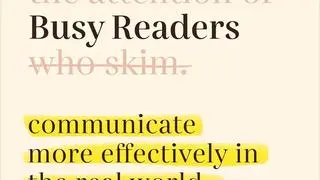Many years ago a very senior member of the IAS and I were discussing his service. He said something that has remained with me. “The government recruits racehorses,” he said, “and then turns them into mules”.
This book, which my friend and college mate, Vinod Rai, has edited, is about ways to tackle this problem. But I fear it exaggerates the number of racehorses. Today the problem is the opposite one. Mostly mules are being recruited.
That’s why I read the bits about the recruitment process with extra attention. The most detailed suggestions have come from S Ramadorai, former chairman of TCS and current chairman of the Karmayogi Mission, a project to build capacity in the civil services. The mission seeks to tackle the racehorses-mules-racehorses problem.
The volume, which has contributions from 14 well known persons, starts with the proposition in the introduction by Rai: if what is required of the bureaucracy has changed, how must the bureaucracy change?
The contributors have addressed different aspects of this supply side problem. The list of changes needed is daunting. It’s one thing to say what but altogether another to say how.
For example, nearly all of them recommend lateral entry. To the direct recruit, as they are called, this is an equivalent of an anulom marriage where a person of lower status raises herself via a shortcut.
The running theme throughout the book is the training of those already recruited so that they can do their jobs as required. Better recruitment policies are also examined but in somewhat lesser detail. Nor has the practice of in-service promotion from a lower service to a higher one been given the attention it deserves. And demotion? Perish the thought.
Three other chapters deserve special attention because they deal with the mindset of the bureaucrats by Naina Lal Kidwai; their accountability or performance by Prajapati Trivedi; and their ethics by Vinod Rai.
Kidwai talks, very circumspectly, about the need for the bureaucracy to adopt a partnership mode rather than the “you damn pests” one. She tells many success stories but doesn’t get to the heart of what Arun Shourie uses to call the ‘ruler’ syndrome, or the colonial mindset.
Trivedi believes in the clarity of targets and methods to evaluate whether they have been achieved. He says “Today India has no system for government performance management and all performance reviews are done in an old-fashioned way.”
His solution: change the system because the Indian bureaucracy is a case of good people caught in a bad system, the racehorse into mules thing. One could, however, equally argue that it’s the good people who create and perpetuate a bad system.
We then come to Rai’s chapter on ethics. This is the trickiest issue because it depends on what’s called ‘niyat’ in Urdu. Roughly translated it means disposition. If you are disposed to be corrupt you will be corrupt.
In this context he briefly touches upon Article 311 in the Constitution that protects civil servants from arbitrary dismissal. But he stops well short of saying that it needs to be amended to include incompetence as a ground for removal from service. Some mules simply can’t be upgraded to become even dray horses and sadly there are far too many of those now.
Finally, one major omission in the book: a discussion of the nature of bureaucratic power. It exists at all levels of the bureaucracy and is rooted in the role that discretion plays in the bureaucracy’s interface with the citizenry.
The Indian bureaucracy is perhaps unique in that so much power rests at the lowest levels. The book would have benefited from some thought given to this peculiarity.
About the book
Title: Transforming the Steel Frame: Promise and Paradox of Civil Service Reform
By: Vinod Rai (edited)
Publisher: Rupa
Pages: 233
Price: ₹595
Check out the book on Amazon here








Comments
Comments have to be in English, and in full sentences. They cannot be abusive or personal. Please abide by our community guidelines for posting your comments.
We have migrated to a new commenting platform. If you are already a registered user of TheHindu Businessline and logged in, you may continue to engage with our articles. If you do not have an account please register and login to post comments. Users can access their older comments by logging into their accounts on Vuukle.